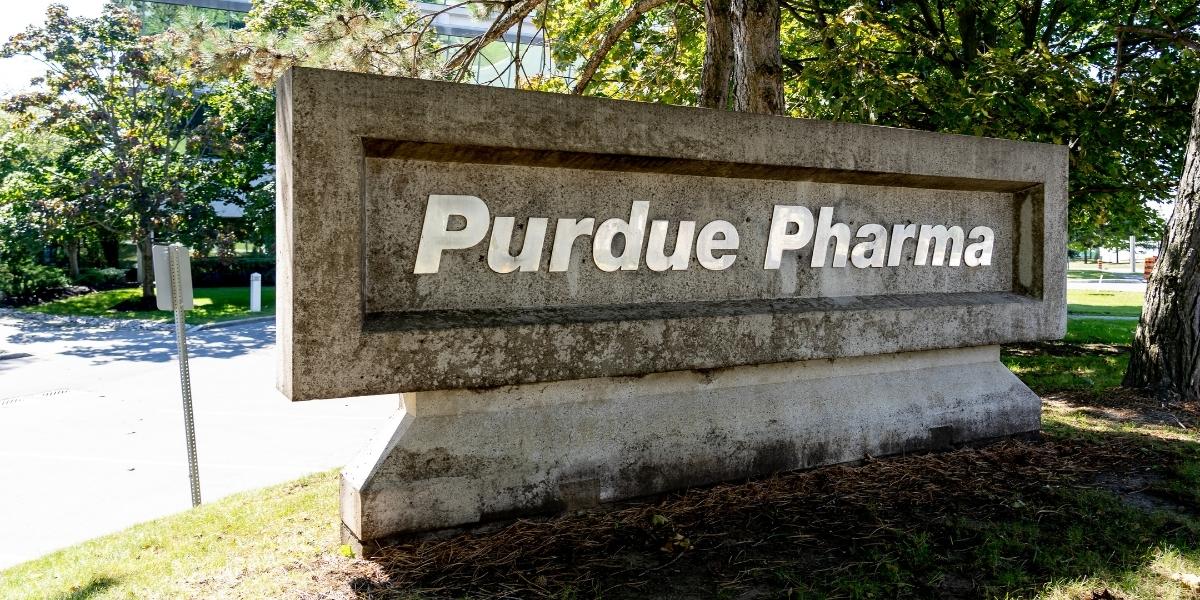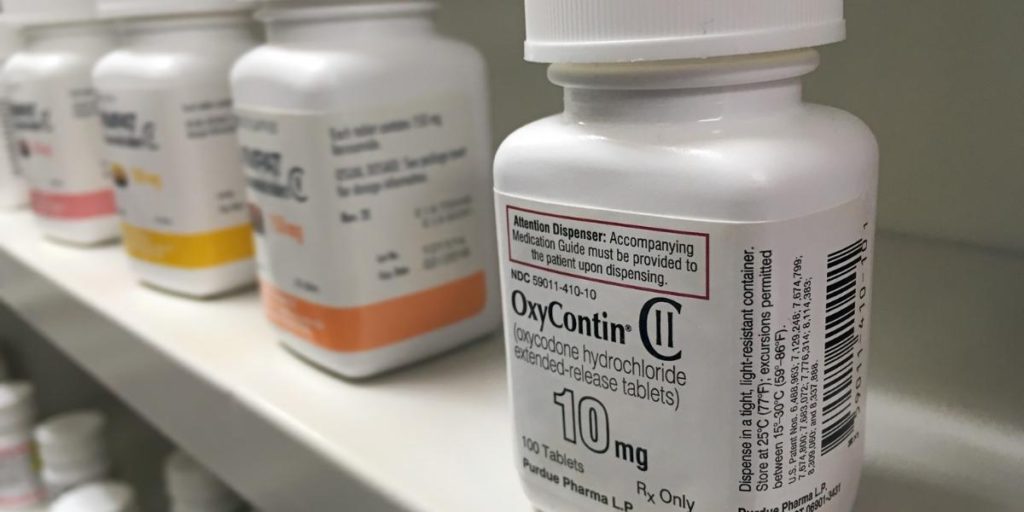Purdue Pharma Reaches New Deal for Their Role in the Opioid Epidemic

The United States is in the middle of an opioid epidemic. Opioids and the drug overdose epidemic have been officially declared a public health emergency.
Roughly 130 people die from opioid addiction or overdose in the United States every day.
According to the Department of Health and Human Services (HHS), more than 760,000 people have died from overdoses since 1999; 507,000 of those directly involved opioids.
Death is an easy statistic to track. Still, the opioid crisis leaves countless other tragedies and victims in its wake due to addiction, incarceration, financial burdens, and the toll it takes on families and communities.
How did so many people go from patient to addict? Why did so many doctors prescribe such highly addictive and dangerous medicine?
They were lied to deliberately.
Purdue Pharma, and the owners, the Sackler family, stood to gain billions of dollars and a near-monopoly on the painkiller market with OxyContin.
With the benefit of hindsight and lawsuits, the roots of the opioid epidemic and all that followed can be traced back to Purdue Pharma’s marketing tactics to push OxyContin.
Thanks to cases pursued by 49 states, Washington DC, and over 500 tribal nations, fines and punishments are being handed to Purdue Pharma for their role in misleading consumers and causing irreparable harm.
There are no quick or easy solutions to end the opioid crisis, but holding companies accountable and changing laws to protect future patients and help victims is a start.
Purdue Pharma
Richard Sackler founded Purdue Pharma LP in 1990.
By 1996 Purdue Pharma, controlled by the Sackler family, rolled out a supposed groundbreaking pain killer, OxyContin.
To ensure the success of OxyContin, the company mounted an aggressive and unique marketing campaign that blurred the lines of ethics and legal boundaries.
After decades of fueling the opioid crisis in the United States, consequences are starting to catch up to Purdue Pharma and the Sackler Family in the form of record-breaking lawsuit payouts and bankruptcies.
Purdue Pharma officially filed for bankruptcy in 2019 but was immediately denied by the Bankruptcy Court due to pending investigations and thousands of lawsuits.
Purdue Pharma reached a deal with attorney generals representing 49 state and local governments, the District of Columbia, and hundreds of tribal communities on March 3rd, 2022.
Under this new deal, Purdue Pharma will declare bankruptcy and restructure as Knoa Pharma.
Allegedly, a public board will run Knoa Pharma, which will specialize in medicines aimed at addiction treatment and reversal.
Purdue Pharma Family: The Sackler’s
In 1952, three brothers, Arthur, Mortimer, and Raymond Sackler, bought the Purdue-Frederick pharmaceutical company. Since then, members of the Sackler family have carried on the pain killer and marketing tradition.
In 2020, Forbes rated the Sacklers as the 30th richest family in America with a $10.8 billion net worth.
The Sacklers have maintained their innocence in the opioid crisis and have sought personal protection clauses during court cases to avoid any branch of the family being held civilly responsible.
The Sackler family donated untold amounts of money to various charities, museums, and universities throughout the United States and parts of Europe.
Many people have criticized these overt displays of philanthropy and donations as “reputation washing,” possible tax evasion, and hiding their money to avoid paying settlements.
As part of a 2020 settlement, the Sackler family has agreed they won’t attempt to stop institutions from removing their name, as well as making more records publicly available.
They will also give up control of their two New York-based charities, The Raymond and Beverly Sackler Foundation and the Raymond and Beverly Sackler Fund for the Arts and Sciences.
At the start of the 21st century, over 31 buildings had a wing named after the Sackler family, including the Metropolitan Museum of Art (MET), The Louvre, The Tate Modern Museum, The Guggenheim, and The Royal Ballet School of London, to name a few.
In 2018, artist Nan Goldin, a recovering opioid addict, organized a protest of the MET for accepting money from the Sacklers. She later founded the group Prescription Addiction Intervention Now (PAIN), which protested at other museums that accepted donations from the Sackler family.
In 2019 both the MET and The Louvre removed the Sackler name from their walls. Other museums have stated they will not accept further donations, but 23 buildings still bear the Sackler name.

OxyContin
OxyContin is a highly addictive opioid. The prescription painkiller OxyContin maker Purdue Pharma introduced it as a miracle pain killer for terminal and non-terminal chronic pain in 1996.
Allegedly because of OxyContin’s extended-release formula, patients would only need to take one dose every 12 hours to manage their pain.
Early clinical trials showed that while OxyContin was comparable to other pain killers, it required more frequent doses than two a day.
OxyContin is a central nervous system depressant. So, in addition to the risk of opioid overdose and life-threatening drug interactions, patients who have a history of asthma or breathing problems have a higher risk of respiratory arrest if they abuse it.
Mixing OxyContin with other depressants, like muscle relaxants, alcohol, other prescription opioids, or illegal drugs increases the likelihood of an accidental overdose.
Opioid overdoses have become so common that almost all emergency medical services now carry Narcan (naloxone) with them in an attempt to save more lives.
People quickly became addicted and realized that snorting OxyContin made the effects kick in stronger and faster.
When OxyContin became too hard or expensive to get, many people turned to heroin or other opioid-based drugs to satisfy their addictions.

Their Role in the Opioid Crisis
The scope of opioid addiction in the United States is almost impossible to believe; even harder to comprehend is that one company was the driving force behind the popularity of prescription opioids—Purdue Pharma LP, which is owned and run by the Sackler family.
In five years, from 1996 to 2001, over 5,000 doctors, nurses, pharmacists, and pain specialists were recruited, trained, and compensated by Purdue Pharma to promote Oxycontin to other medical professionals.
In the same time frame, the company’s value increased from $48 million to $1.1 billion.
Some pharmaceutical representatives received more sales bonuses than their entire year’s salary when their territory hit the quota for Oxycontin prescriptions written and filled.
In 2001 alone, Purdue Pharma gave out over $40 million in sales bonuses and incentives.
A good marketing strategy isn’t explicitly illegal, so what’s the problem?
To convince medical professionals that OxyContin was not only the superior product but was less addictive than other pain products, Purdue Pharma had to lie and hide evidence, as well as provide incentives for more prescriptions.
Purdue Pharma created a coupon program for first-time users that provided up to a month free of OxyContin.
According to the Centers for Disease Control (CDC), using prescription opioids for more than three days drastically increases the risk of dependence and developing an opioid use disorder.
By 2001, over 34,000 people had redeemed coupons.
OxyContin and the Opioid Epidemic
In 2001, the Food and Drug Administration (FDA) reviewed OxyContin and mandated warnings for the drug’s label about the potential for misuse and addiction.
The explosion in opioid prescriptions is what the CDC classifies as the “first wave” of the opioid epidemic.
Once prescription opioids became harder to obtain, many people turned to illicit opioids to feed their addiction, which led to a rise in heroin overdoses and death. The CDC has labeled this the “second wave” of the United State’s opioid epidemic.
The introduction of fentanyl into the illegal drug market has led to the “third wave” of the opioid epidemic, with a rise in accidental overdoses and deaths involving drugs that have been cut, unknown to the user.
There is a direct line between Purdue Pharma and the Sacklers’ reckless ambition to push OxyContin on patients to the current opioid crisis facing America.
In a part of a statement released through their legal counsel, the Sackler Family continues to deny their role in the current opioid crisis: “While the families have acted lawfully in all respects, they sincerely regret that OxyContin, a prescription medicine that continues to help people suffering from chronic pain, unexpectedly became part of an opioid crisis that has brought grief and loss to far too many families and communities.”
Purdue Pharma Settlement
Previously, Purdue pleaded guilty to three felonies— one count of defrauding the United States and violating the Food, Drug, and Cosmetics Act and two counts of conspiracy to violate the Federal Anti-Kickback Statute.
Eight of the Sacklers have personally paid the Justice Department a total of $225 million as part of that 2020 court settlement.
As part of the same settlement, Purdue Pharma forfeited $2 billion, paid an additional fine of $3.544 billion, and to settle civil lawsuits, paid $2.8 billion, totaling over $8 billion.
On March 3rd, 2022, Purdue Pharma and the Sackler family reached a settlement agreement with the federal government, representing many state, local, and tribal governments.
As part of the 2022 bankruptcy settlement, the Sacklers will personally pay up to $6 billion in restitution fees in exchange for protection from civil lawsuits. And they are still subject to criminal charges in the future.
This settlement is a billion dollars more than the $4.5 billion settlement the Sackler family agreed to pay in 2019 when Purdue Pharma filed for bankruptcy.
The payout to plaintiffs will be $5.5 billion, with an additional $500 million more once Purdue Pharma and Mundipharma, the overseas branch of Purdue, are sold to an outside party.
The deal could still face appeals and has been met with strong objections from the United States Trustee Program, a part of the Department of Justice that oversees bankruptcy settlements and victims of the opioid crisis.
One of the main objections is to protect the Sackler family from further lawsuits of holding them personally responsible for the opioid crisis.
Executives and employees of Purdue Pharma did not receive the same exemption.
The Justice Department has not commented on plans to charge the family criminally for their role in the opioid crisis.

Find Addiction Treatment
If you or a loved one struggles with opioid addiction, you are far from alone.
At Northridge Addiction Treatment Center, our professional and compassionate team of therapists, counselors, and nurses work closely with you during every step of your healing.
Our comfortable and serene facility offers medical detox surrounded by supportive nurses and a family environment to give you the confidence to complete treatment and continue on your path to recovery, even after you walk out of our doors.
NATC’s evidence-based treatment programs, including dual diagnosis for co-occurring disorders and medication-assisted treatment, ensure we treat the roots of the addiction, not just the symptoms.
Help is only a phone call away. Contact us today to talk to our treatment specialists with any concerns or questions you may have.
Find Meaningful Recovery
Our caring and compassionate specialists are eager to help you comfortably navigate this journey to recovery. Our individualized treatment plan, programs, and therapies may be a perfect match for you or your loved one. Let us assist you in living the happy life you deserve. It starts with a phone call.




